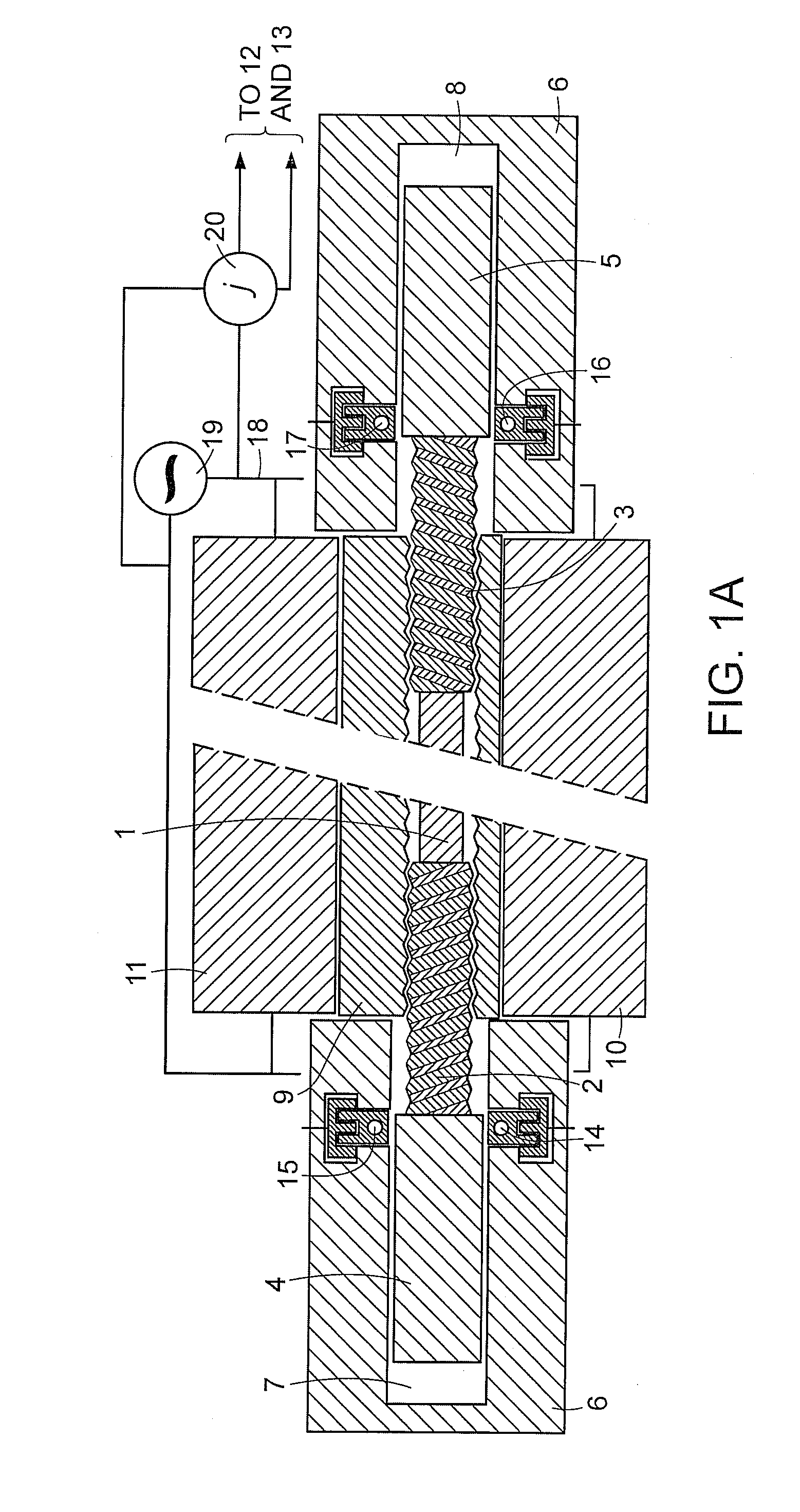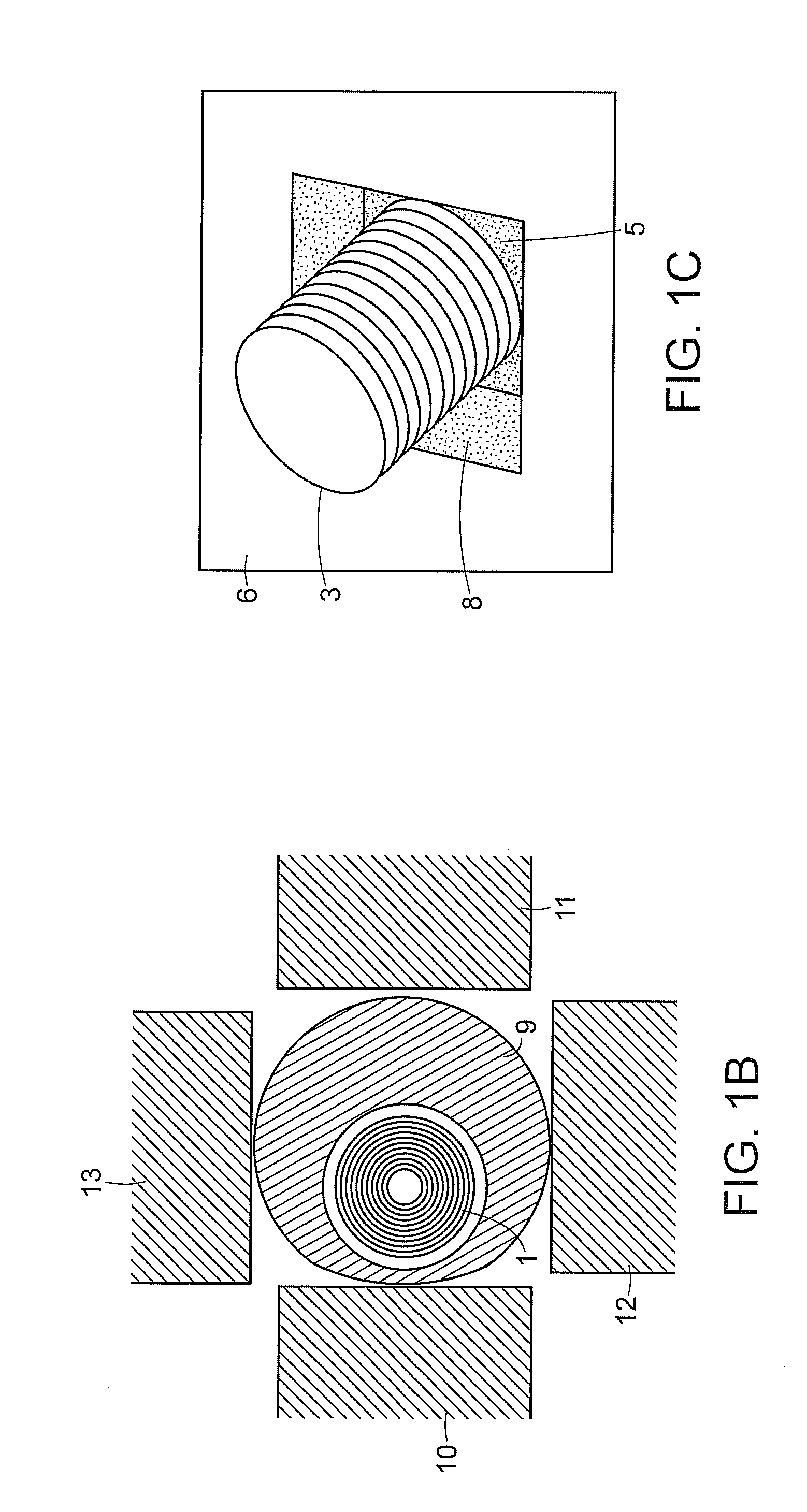Devices for storing energy in the mechanical deformation of nanotube molecules and recovering the energy from mechanically deformed nanotube molecules
a technology of mechanical deformation and nanotube molecules, which is applied in the field of energy storage, can solve the problems of relatively low energy storage density of nanotube molecules, and it is quite difficult to demonstrate these properties experimentally, and achieve the effect of mechanical energy recovery
- Summary
- Abstract
- Description
- Claims
- Application Information
AI Technical Summary
Benefits of technology
Problems solved by technology
Method used
Image
Examples
Embodiment Construction
[0012]The invention provides a technique to utilize nanotubes as “super-springs” in which one can store and from which one can recover energy for subsequent use, either directly in the form of mechanical energy or in the form of electricity generated from this mechanical energy. The technical rational for this new use of nanotubes is as follows.
[0013]Nanotube molecules are not only several times stiffer than steel, but they are also far more flexible than steel. In addition, nanotubes are not prone to fatigue from repeated use, as metal springs are. Since the energy stored in any spring is approximately proportional to the stiffness and to the square of the displacement, these two facts together imply that it should be possible to store much more energy in a spring composed entirely or largely of nanotube molecules than it would be in any other known kind of spring of comparable size and weight.
[0014]An estimate of the maximum energy density of a nanotube spring is readily obtained ...
PUM
| Property | Measurement | Unit |
|---|---|---|
| energy storage density | aaaaa | aaaaa |
| stored energy | aaaaa | aaaaa |
| piezoelectric | aaaaa | aaaaa |
Abstract
Description
Claims
Application Information
 Login to View More
Login to View More - R&D
- Intellectual Property
- Life Sciences
- Materials
- Tech Scout
- Unparalleled Data Quality
- Higher Quality Content
- 60% Fewer Hallucinations
Browse by: Latest US Patents, China's latest patents, Technical Efficacy Thesaurus, Application Domain, Technology Topic, Popular Technical Reports.
© 2025 PatSnap. All rights reserved.Legal|Privacy policy|Modern Slavery Act Transparency Statement|Sitemap|About US| Contact US: help@patsnap.com



